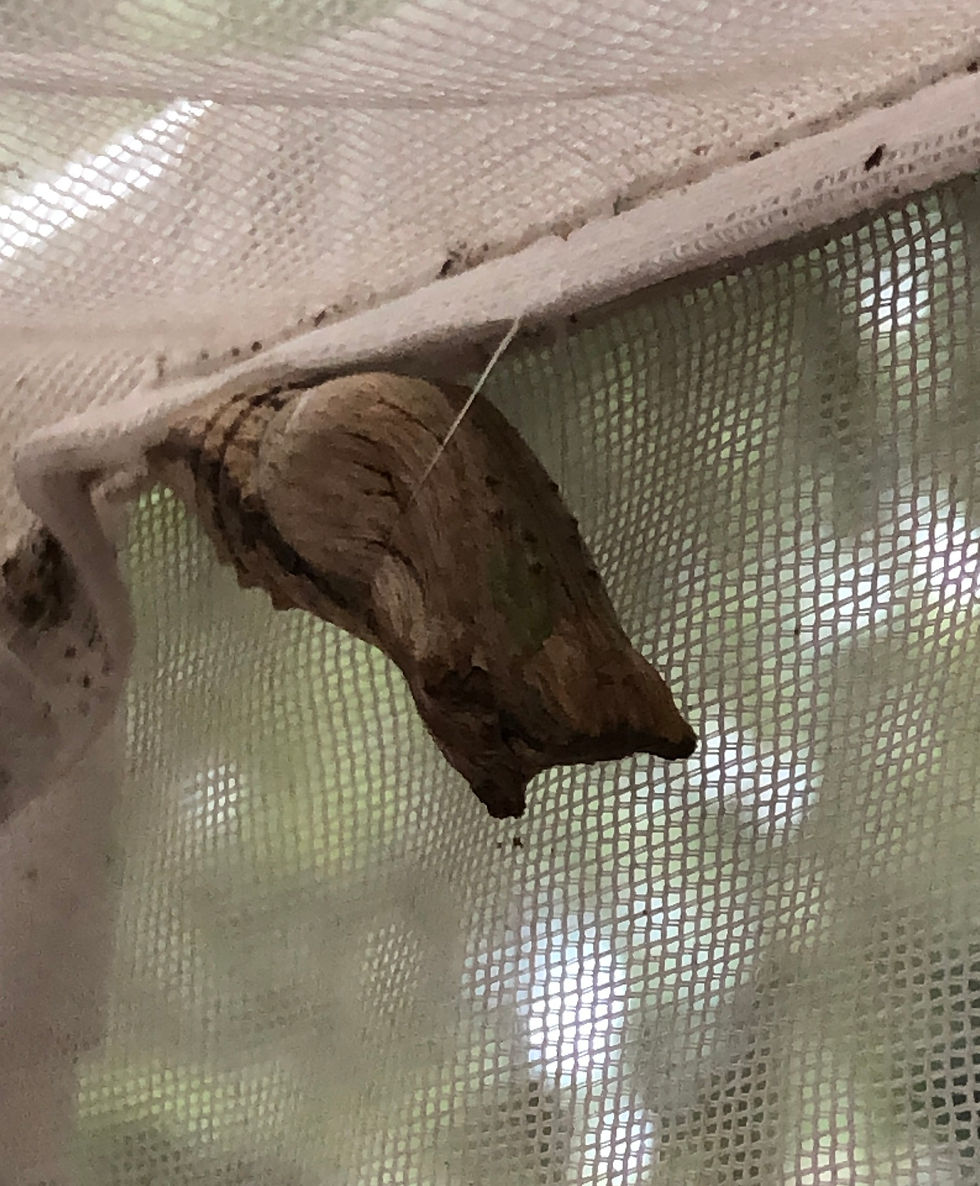All God's Critters
- Katherine Dudley Hoehn
- Aug 2, 2023
- 3 min read

Long before reading Charlotte’s Web by E.B. White (I never kill spiders), I realized every living thing is on earth for a reason (even snakes and alligators, which I generally avoid).

When my sons were small, Annie, a friend of Mom’s, recorded a cassette tape of lively children’s songs, including John McCutcheon’s rendition of “All God’s Critters Got a Place in the Choir.” We sang it and played it in the car again and again.
I now read the book, by John Staines, one of my sons' favorites, to all my visiting grandchildren. I guess you could call it the family theme song because we all love critters and most of us like to sing.
My children are now parents and the eldest sings the song to his children. It's the sweetest thing in the world to hear him, particularly when he sings low like the bullfrog and they sing along. Sweet moments.

My relationship with critters here in Florida is generally good, except for the armadillos. They’ve dug up and killed a bush and tried to dig under the screened porch multiple times. I use large containers of cayenne pepper and douse their holes, cover them, and pour more pepper over the top. Apparently, they don’t like hot pepper on their feet or snouts because they don’t come back to the peppery holes. But I never know where they’ll strike next.
My garden is also inhabited by rabbits and a passel of opossums. Rabbits eat my flowers and taunt the dog, Leah; opossums eat fleas, ticks, and other bugs but mostly just upset Leah. Fun fact: opossums have 50 teeth - more than any other land mammal in North America.
Two teenager opossums were hiding in a box in the backyard. When discovered and encouraged to move along, they looked like sleepy children, awakened early, with tousled hair and seeming a bit disoriented. They were adorable and fortunately climbed a tree before Leah found them.

In my butterfly gardens, I have monarchs, zebra long wings, fritillaries, and several kinds of swallowtails. It's miraculous to watch as eggs on milkweed, curly parsley, and fennel hatch into tiny caterpillars smaller than a quarter of an inch that grow to more than two inches long in a few days. When they form a chrysalis, it’s even more amazing. Finally, a week or so later, a butterfly emerges. This year, I’ve harbored dozens of caterpillars and chrysalises from their critter enemies, lizards and birds, and released beautiful butterflies.

When my youngest granddaughter and her “All God’s Critters”-singing father visited recently, she adopted a caterpillar that eventually became a beautiful swallowtail. It’s important to pass these experiences along to the youngest generation; it's something they'll remember and tell their children about.
Butterflies’ place in the choir is short-lived. Many only live for a few weeks, but leave behind eggs that begin the new generation. Let’s do what we can to keep them singing, too. Butterflies everywhere are endangered because of humans – loss of habitat and use of pesticides.
How to help ensure that butterflies continue to sing in the choir

Avoid using pesticides. All critters, even bugs, have a purpose. Pesticides kill butterflies and caterpillars and other bugs that lizards and birds eat. University of Florida recommends that gardeners and homeowners “identify pests, scout for them, and use soft pesticides—such as oils, soaps, and botanicals—to spot treat pests only when necessary.” Read about this practice called integrated pest management.

Buy butterfly plants from a quality nursery and plant them in your garden. Ask nurseries to guarantee their plants have not been sprayed with pesticides and that they haven’t used systemic pesticides (in the soil). Such plants are poisonous to caterpillars that feed on them. I unknowingly purchased plants with systemic pesticides and the poor little caterpillars died when they tried to go to chrysalis – dozens of future butterflies were lost.
University of Florida has helpful information about Community ButterflyScaping or how to encourage community wide large-scale butterfly habitats.

Enjoy this YouTube of John McCutcheon’s performance of Bill Staines’s song, All God’s Critters Got a Place in the Choir, from his album Howjadoo (one of my favorites). I also love Peter, Paul, and Mary's version.
Blog about Butterflies: Butterfly Kisses





Kat, your pictures are gorgeous. Thanks for the tips on helping these beautiful creatures.
I really REALLY love this one Kat! And the links to the music too! Thank you!
Loved the blog—beautiful pics of God’s critters and learned a few things too!
Butterflies are magical! Thanks for caring for them and sharing your critter experiences.
A visitor from our flower pots.💕